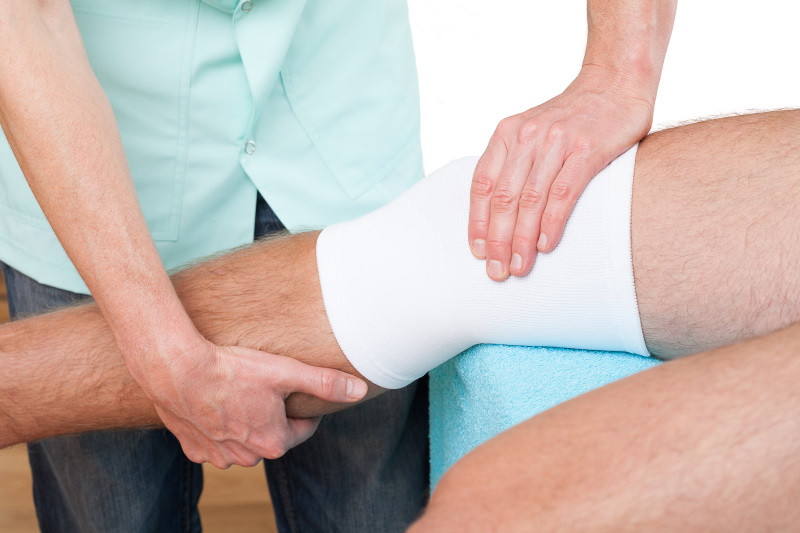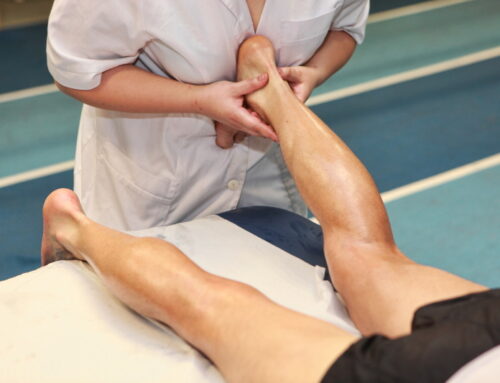The knee joint is the largest weight-bearing joint in the body, and we ask a lot of it. It has to bend; rotate; twist and straighten, while carrying the rest of our body around on top.
All these demands on the knee mean it’s prone to wearing out or to sustaining an injury. Knee pain can be caused by sudden trauma, or by overuse- constant repetitive stress on the joint.
There are two types of cartilage in the joint; hyaline cartilage which forms a smooth surface over the bones, helping distribute the pressure while we run and jump around; and the meniscal cartilage.
Damage to the hyaline cartilage is usually wear and tear; whereas meniscal injury can be the result of a traumatic tear after a pivot or twist; or a degenerative tear.
Repair of Hyaline Cartilage
An injury to the hyaline cartilage can be repaired by Autologous Chondrocyte Implantation (ACI) surgery.
Cartilage can’t repair itself, so a procedure was developed that takes cartilage cells from the patient’s knee (chondrocytes) and cultures them, and they multiply. The new chondrocytes are then implanted into the knee, promoting the generation of hyaline cartilage.
ACI is performed by a surgeon after a knee arthroscopy (a little tiny camera is attached to a pen-shaped instrument that is inserted into the knee). He can take a cartilage sample (a biopsy) and culture it for 4 or 5 weeks, and the cells multiply into millions.
In theatre, after removing damaged cartilage, he’ll suture the type of skin that lines bones (periosteum) to the place where the cartilage was removed, before implanting the cultured cells. They continue to multiply after surgery and eventually get incorporated into the surrounding cartilage, restoring the smooth hyaline surface.
Meniscal Repair
There are two menisci in each knee, and their job is to distribute the load; absorb shock; keep the knee joint lubricated and improve its stability.
A tear to the meniscal cartilage is a common type of knee cartilage injury, and treatment will depend on what part of the crescent- shaped pad has been damaged. There’s good blood supply to the outside part of the meniscus so they tend to heal well with the help of physiotherapy lead treatment and exercises.
It’s the location and type of tear that will determine whether your tear can be repaired by surgery. Radial tears sometimes can be repaired, but horizontal, flap, long-standing, and degenerative tears—those caused by years of wear and tear—generally cannot be repaired.
The inner two thirds of the meniscus doesn’t have a good blood supply, so heals poorly. If any torn bits of cartilage float into the knee space, surgery is required.
It depends on your particular case, but meniscal repair can help prevent degenerative changes to the knee joint and lower the risk of early onset arthritis- for this reason if surgery is needed, surgeons try to keep as much of the meniscus as possible.
Treatment for Knee Injury
The initial treatment for a knee injury is ‘PRICE’, which stands for:
Protection from further injury- get off the knee
Rest and crutches for the initial 24-48 hours).
Ice (applied to the injured knee for about 15 minutes every hour during the first couple of days after the initial injury).
Compression (with a knee brace or bandages).
Elevation (above the level of the heart).
PRICE is used to reduce the pain and inflammation, and after they subside, physiotherapy treatment can be used to help increase strength and get range of motion back gradually.
Post-Surgery Treatment
After knee surgery- or even if you’re not having surgery but need to get your knee back into working shape again, rehabilitation is required.
At Portobello Physiotherapy Clinic, a program will be drawn up to suit you, which will focus on restoring your range of motion, developing strength and returning you to your normal activities.
The timeframe depends on your progression and what kind of shape you were in before the injury; your age; your compliance with the exercises and how bad the knee injury is. The size and location of the tear in the case of a meniscal injury will also affect the physiotherapy progression.
Progressive Goals
The goals will progress as you work through your program; the initial goals will be to eliminate any swelling and pain get normal range of motion back; normalise your gait and restore control of your leg.
You will probably need crutches at first and you’ll go through a series of exercise to begin working on your range of motion, including knee extensions; heel slides and more.
Gait drills and leg lifts will be incorporated, and other cardio for the upper body may be suggested. As the program goes on, other non-impact exercises will be incorporated and your core strength developed. The ultimate goal is good leg control; no pain with movement and normal range of motion so you can resume your sporting and everyday activities.
For more information or to book an appointment please call Portobello Physiotherapy Clinic on
01 476 3330.







